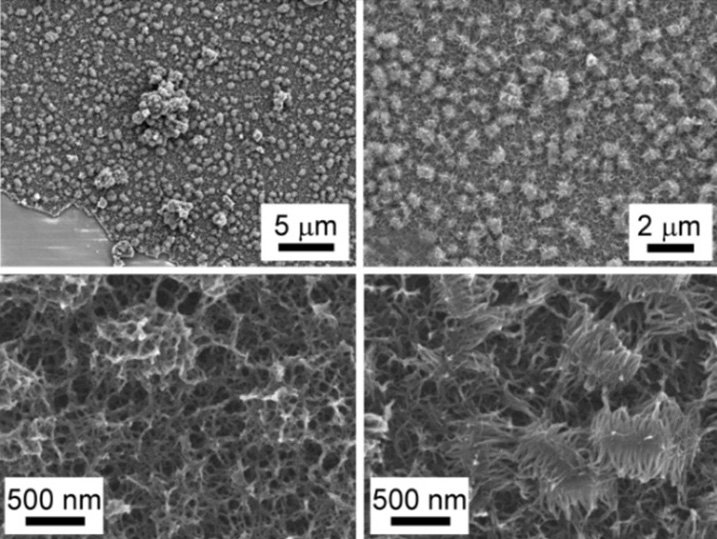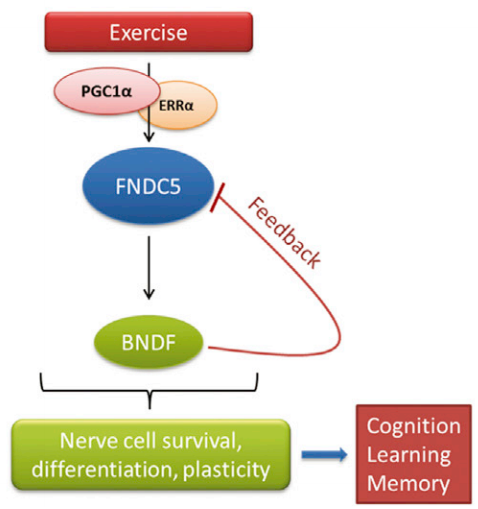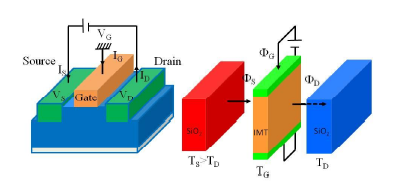Lachlanmoss
Shared posts
On a Roll! SpaceX Launches, Lands Used Rocket Once Again, With 'Highest-Ever Reentry Force'
Mantis Shrimp Shells May Inspire Next-Generation Computer Chips
-- Read more on ScientificAmerican.com
The FBI v. Apple isn’t at all the way you think it is
 The FBI holds an iPhone that was owned by one of the San Bernardino terrorists, Syed Rizwan Farook, and wants Apple to crack it. Apple CEO Tim Cook is defying the FBI request and the court order that accompanied it, saying that cracking the phone would require developing a special version of iOS that could bypass passcode encryption. If such a genetically modified mobile OS escaped into the wild it could be used by anyone to crack any current iPhone, which would be bad for Apple’s users and bad for Amurica, Cook says. So he won’t do it, dag nabbit.
The FBI holds an iPhone that was owned by one of the San Bernardino terrorists, Syed Rizwan Farook, and wants Apple to crack it. Apple CEO Tim Cook is defying the FBI request and the court order that accompanied it, saying that cracking the phone would require developing a special version of iOS that could bypass passcode encryption. If such a genetically modified mobile OS escaped into the wild it could be used by anyone to crack any current iPhone, which would be bad for Apple’s users and bad for Amurica, Cook says. So he won’t do it, dag nabbit.
That’s the big picture story dominating the tech news this week. However compelling, I’m pretty sure it’s wrong. Apple isn’t defying the FBI. Or at least Apple isn’t defying the Department of Justice, of which the FBI is supposed to be a part. I believe Apple is actually working with the DoJ, which doesn’t really want to compel Apple to do anything except play a dramatic and very political role.
Now for some more details. In order to get their court order the FBI had to tell the judge that its own lab couldn’t crack the phone. Or maybe they said their lab didn’t crack the phone. Nobody knows. But the first question any cynic with technical bones would ask is, “Can’t the CIA/NSA/Steve Gibson, somebody crack that darned iPhone?”
John McAfee, who is one of my absolute favorite kooks of all time says he can do it, no problem, in about a month. McAfee says the FBI is just cheap and unwilling to drop big bucks on the right bad guys to make it happen, which kinda suggests that iPhones have been broken-into before, doesn’t it?
One important point: I know John McAfee and if he says he can do it, he can do it.
There’s something that doesn’t smell right here. The passage of time, the characters involved, the urgency of anti-terrorism make me strongly suspect that the innards of that iPhone are already well known to the Feds. If I were to do it I wouldn’t try cracking the phone at all, but its backup on a Mac or PC or iCloud, so maybe that’s the loophole they are using. Maybe they didn’t crack the iPhone because they didn’t have to. Or maybe some third party has already cracked it, leaving the FBI with that old standby plausible deniability.
Let’s drop for a moment the technical arguments and look at the legal side. If you read Fortune on this issue it looks like Apple will probably prevail. The legal basis for compelling Apple to invent a key for a lock that’s not supposed to even exist is flimsy. This does not mean that the FBI couldn’t prevail in some courts (after all, they convinced the judge who issued the original order). But it’s really a legal tossup who wins at this point, or appears to be. Remember, though, that when it comes to lawyers Apple can probably afford better help than can the U.S. Government.
So Apple’s being seen as an unpatriotic pariah with Silicon Valley companies like Facebook and Twitter only in the last few hours finally starting to support Cupertino.
Before I tell you what I think is actually happening here let me add one more piece of data. At the same time the FBI is pushing for unprecedented power to force decryption of devices, another news item appeared this week: Columbia University computer scientist Steve Bellovin has been appointed the first technology scholar for the Privacy and Civil Liberties Oversight Board — the outfit that oversees these very activities at federal agencies including the NSA, CIA and, yes, the FBI. Up to this point the Board has never had as a voting member someone who actually understands this stuff in real depth. And professor Bellovin does much more than just understand this technology, he’s publicly opposed to it as co-author of a seminal report, Keys Under Doormats: Mandating insecurity by requiring government access to all data and communications. The report, which was published last July by MIT, clearly takes the position that the the FBI is wrong in its position against Apple. Not legally wrong — this isn’t a legal document — but wrong in terms of proper policy. Just as the Clipper Chip was a bad idea when I wrote about it right here almost 20 years ago, this forced hacking of iPhones is a bad idea, too, or so claims Bellovin.
Would Donald Trump, Ted Cruz, Marco Rubio, or even Jeb Bush have appointed Bellovin to that board? I don’t think so.
So wait a minute. There’s a plenty of reason to believe that Apple complying with the FBI order is bad policy, it’s legally shaky, and at least one of the people who makes the strongest arguments in this direction is now voting on a secret government board? What the heck is going on here?
What’s going on is Justice Antonin Scalia is dead.
Had Justice Scalia not died unexpectedly a few days ago (notably before the Apple/FBI dustup) and had the FBI pursued the case with it landing finally in the Supreme Court, well the FBI would have probably won the case 5-4. Maybe not, but probably.
With Justice Scalia dead and any possible replacement locked in a Republican-induced coma, the now eight-member Supreme Court has nominally four liberal and four conservative justices but at least 1.5 of those conservatives (Justice Kennedy and sometimes Chief Justice Roberts) have been known to turn moderate on certain decisions. This smaller court, which will apparently judge all cases for the next couple years, is likely to be more moderate than the Scalia Court ever was.
So if you are a President who is a lawyer and former teacher of constitutional law and you’ve come over time to see that this idea of secret backdoors into encrypted devices is not really a good idea, but one that’s going to come up again and again pushed by nearly everyone from the other political party (and even a few from your own) wouldn’t right now be the best of all possible times to kinda-sorta fight this fight all the way to the Supreme Court and lose?
If it doesn’t go all the way to the Supremes, there’s no chance to set a strong legal precedent and this issue will come back again and again and again.
That’s what I am pretty sure is happening.


Digital Branding.
Web Design. Marketing
Everything You Need to Know About CRISPR Gene Editing’s Monster Year
The explosion of gene-editing methods is transforming medicine, agriculture, and possibly the future of the human species.
Muscle-bound beagles. Hornless cows. Better potatoes. Genetically modified human embryos.
Australian Astronomy Envy: This Video Is Like A Telescope Brochure
Performing observations in Australia is on many astronomers’ bucket lists, and this video timelapse shows you precisely why. Famous, world-class observatories, dark sky and the beautiful desolation of the desert combine in this award-winning sequence shot by Alex Cherney and posted on Vimeo.
(...)
Read the rest of Australian Astronomy Envy: This Video Is Like A Telescope Brochure (83 words)
© Elizabeth Howell for Universe Today, 2014. |
Permalink |
One comment |
Post tags: australia, video timelapse
Feed enhanced by Better Feed from Ozh
Supermassive Black Hole Blasting Molecular Hydrogen Solves Outstanding Mystery

An artist’s conception of a supermassive black hole’s jets. Image Credit: NASA / Dana Berry / SkyWorks Digital
The supermassive black holes in the cores of most massive galaxies wreak havoc on their immediate surroundings. During their most active phases — when they ignite as luminous quasars — they launch extremely powerful and high-velocity outflows of gas.
These outflows can sweep up and heat material, playing a pivotal role in the formation and evolution of massive galaxies. Not only have astronomers observed them across the visible Universe, they also play a key ingredient in theoretical models.
But the physical nature of the outflows themselves has been a longstanding mystery. What physical mechanism causes gas to reach such high speeds, and in some cases be expelled from the galaxy?
A new study provides the first direct evidence that these outflows are accelerated by energetic jets produced by the supermassive black hole.(...)
Read the rest of Supermassive Black Hole Blasting Molecular Hydrogen Solves Outstanding Mystery (332 words)
© Shannon Hall for Universe Today, 2014. |
Permalink |
No comment |
Post tags: Black Hole Jets, quasars, supermassive black holes
Feed enhanced by Better Feed from Ozh
Never Fear – Internet Stuff!
Oh my god, I’m not on Facebook anymore, how can I tell people about all the cool music related videos I run across? ![]()
Hehe, never fear, here’s your semi-regular dose of fun and off-the-wall music related sorta stuff:
Might not be everyone’s thing, but hard not to admire such musicianship and how well they improvise together. Skip to 12:00 if your attention span is short ![]()
———–
Here’s an interesting (if long) article I was forwarded that talks a little about some of the policies Google has used when licensing music in the past. Very interesting read, and pertinent with all the deals happening now:
Not trying to be doom and gloom, but it’s interesting how they are approaching this whole situation.
More interesting music news and performances as I find them, stay tuned!
The Legend of Old Tom and the Gruesome "Law of the Tongue"
Massive Synth Collection
A new self-assembling graphene-like material for flat semiconductors
A diagram of the molecular structure of the new material shows how it naturally forms a hexagonal lattice structure, and its two-dimensional layers naturally arrange themselves so that the openings in the hexagons are all perfectly aligned (credit: Dennis Sheberla et al.)
MIT and Harvard University researchers have found a two-dimensional material whose properties are very similar to graphene*, but with some distinct advantages — including the fact that this material naturally has a usable bandgap, which is essential for making devices such as computer chips and solar cells.
The new material, is a combination of nickel and an organic compound called HITP. Its constituents also naturally assemble themselves, a “bottom-up” approach that could lend itself to easier manufacturing and tuning of desired properties by adjusting relative amounts of the ingredients.
Graphene-like structure
The new compound, Ni3(HITP)2, shares graphene’s perfectly hexagonal honeycomb structure. What’s more, multiple layers of the material naturally form perfectly aligned stacks, with the openings at the centers of the hexagons all of precisely the same size, about 2 nanometers (billionths of a meter) across.
The research, just published online in the Journal of the American Chemical Society, was carried out by MIT assistant professor of chemistry Mircea Dincă and seven co-authors.

Scanning electron microscope images show the particles of Ni3(HITP)2 material at various levels of magnification. While the material in this study was in the form of nanoparticles, the analysis show that these particles are actually formed of collections of two-dimensional flakes. (Credit: Dennis Sheberla et al.)
In these initial experiments, the researchers studied the material in bulk form, rather than as flat sheets. Dincă says that makes the current results — including excellent electrical conductivity — even more impressive, since these properties should be better yet in a 2-D version of the material.
“There’s every reason to believe that the properties of the particles are worse than those of a sheet,” he says, “but they’re still impressive.”
Exotic materials
What’s more, this is just the first of what could be a diverse family of similar materials built from different metals or organic compounds. “Now we have an entire arsenal of organic synthesis and inorganic synthesis,” Dincă says, that could be harnessed to “tune the properties, with atom-like precision and virtually infinite tunability.”
Such materials, Dincă says, might ultimately lend themselves to solar cells whose ability to capture different wavelengths of light could be matched to the solar spectrum, or to improved supercapacitors, which can store electrical energy until it’s needed.
In addition, the new material could lend itself to use in basic research on the properties of matter, or to the creation of exotic materials such as magnetic topological insulators (materials that exhibit quantum Hall effects). “They’re in the same class of materials that have been predicted to have exotic new electronic states,” Dincă says. “These would be the first examples of these effects in materials made out of organic molecules. People are excited about that.”
Pingyun Feng, a professor of chemistry at the University of California at Riverside who was not involved in this work, says the approach used by this team is “novel and surprising,” and that “the quality of this work, from the synthetic design strategy to the probing of the structural details and to the discovery of exceptional electrical conductivity, is outstanding.” She adds that this finding “represents a major advance in the synthetic design of novel semiconducting materials.”
The work was supported by the U.S. Department of Energy and the Center for Excitonics at MIT.
* Graphene has extremely good electrical and thermal conductivity, as well as great strength. But its lack of a bandgap forces researchers to modify it for certain uses — such as by adding other molecules that attach themselves to its structure — measures that tend to degrade the properties that made the material desirable in the first place.
Abstract of Journal of the American Chemical Society paper
Reaction of 2,3,6,7,10,11-hexaaminotriphenylene with Ni2+ in aqueous NH3 solution under aerobic conditions produces Ni3(HITP)2 (HITP = 2,3,6,7,10,11-hexaiminotriphenylene), a new two-dimensional metal–organic framework (MOF). The new material can be isolated as a highly conductive black powder or dark blue-violet films. Two-probe and van der Pauw electrical measurements reveal bulk (pellet) and surface (film) conductivity values of 2 and 40 S·cm–1, respectively, both records for MOFs and among the best for any coordination polymer.
‘Something very big is coming: our most important technology project yet,’ hints Stephen Wolfram

(Credit: Stephen Wolfram)
In a blog post Wednesday, Stephen Wolfram said that “recently something amazing has happened” that is “profoundly important in the technological world, and beyond.”
He said he and his team have figured out how to take all the things they have been working on in the context of Wolfram|Alpha, Mathematica, CDF and so on — computational knowledge, symbolic programming, algorithm automation, dynamic interactivity, natural language, computable documents, the cloud, connected devices, symbolic ontology, algorithm discovery — and all the technology they’ve built, to create something at a whole different level.
The “Wolfram Language”
A crucial building block of all this is what they are calling the Wolfram Language — a general-purpose knowledge-based language that covers all forms of computing, in a new way, he says.
“In the Wolfram Language, built right into the language, are capabilities for laying out graphs or doing image processing or creating user interfaces or whatever. Inside there’s a giant web of algorithms — by far the largest ever assembled, and many invented by us. And there are then thousands of carefully designed functions set up to use these algorithms to perform operations as automatically as possible … and including all the knowledge and data and algorithms that are built into Wolfram|Alpha.
“But now there’s even more. Because we’re also integrating right into the language So in a sense inside the Wolfram Language we have a whole computable model of the world. And it becomes trivial to write a program that makes use of the latest stock price, computes the next high tide, generates a street map, shows an image of a type of airplane, or a zillion other things.
“We’re also getting the free-form natural language of Wolfram|Alpha. So when we want to specify a date, or a place, or a song, we can do it just using natural language. And we can even start to build up programs with nothing more than natural language. …”

(Credit: Stephen Wolfram)
“But there’s something else too. There’s a fundamental idea that’s at the foundation of the Wolfram Language: the idea of symbolic programming, and the idea of representing everything as a symbolic expression. It’s been an embarrassingly gradual process over the course of decades for me to understand just how powerful this idea is. That there’s a completely general and uniform way to represent things, and that at every level that representation is immediately and fluidly accessible to computation. …
“In most languages there’s a sharp distinction between programs, and data, and the output of programs. Not so in the Wolfram Language. It’s all completely fluid. Data becomes algorithmic. Algorithms become data. There’s no distinction needed between code and data. And everything becomes both intrinsically scriptable, and intrinsically interactive. And there’s both a new level of interoperability, and a new level of modularity. …”
Universal platform
“Between the Wolfram Language — with all its built-in computation and knowledge, and ways to represent things — and our Universal Deployment System, we have a new kind of universal platform of incredible power. And part of the challenge now is to find the best ways to harness it.”
Wolfram says they will be releasing a series of products that support particular ways of using the Wolfram Engine and the Universal Platform:
- Wolfram Programming Cloud, that allows one to create Wolfram Language programs, then instantly deploy them in the cloud through an instant API, or a form-based app, or whatever.
- Wolfram Data Science Platform, that allows one to connect to all sorts of data sources, then use the kind of automation seen in Wolfram|Alpha Pro, then pick out and modify Wolfram Language programs to do data science — and then use CDF to set up reports to generate automatically, on a schedule, through an API, or whatever.
- Wolfram Publishing Platform that lets you create documents, then insert interactive elements using the Wolfram Language and its free-form linguistics — and then deploy the documents, on the web using technologies like CloudCDF, that instantly support interactivity in any web browser, or on mobile using the Wolfram Cloud App.
- Mathematica Online, in which a whole Mathematica session runs on the cloud through a web browser.
“If we’re forming a kind of global brain with all our interconnected computers and devices, then the Wolfram Language is the natural language for it.”
Sound intriguing … we’ll be watching for it! — Editor
Real-life toy town!
Danny MacAskill has created this amazing BMX video in which he re-creates toy town for real! Enjoy! (via gilad d)
ALMA Warms Up the View of the Coldest Place In the Universe
Where is the coldest place in the Universe? Right now, astronomers consider the “Boomerang Nebula” to have the honors. Located about 5,000 light-years away in the constellation Centaurus, this pre-planetary nebula carries a temperature of about one degree Kelvin – or a brisk, minus 458 degrees Fahrenheit. That makes it even colder than the natural background temperature of space! What makes it more frigid than the elusive afterglow of the Big Bang? Astronomers are employing the powers of the Atacama Large Millimeter/submillimeter Array (ALMA) telescope to tell us more about its chilly properties and unusual shape. (...)
Read the rest of ALMA Warms Up the View of the Coldest Place In the Universe (632 words)
© tammy for Universe Today, 2013. |
Permalink |
4 comments |
Post tags: Atcama Large Millimeter/submillimeter Array (ALMA), Boomerang Nebula, Coldest Place in the Universe, cosmic microwave background radiation, Planetary Nebula
Feed enhanced by Better Feed from Ozh
Man Spends 40 Years Building Giant Kinetic Carnival Rides to Advertise Family Restaurant in Italy

Courtesy Oriol Ferrer Mesià

Courtesy Oriol Ferrer Mesià

Courtesy Oriol Ferrer Mesià

Courtesy Oriol Ferrer Mesià

Courtesy Oriol Ferrer Mesià

Courtesy Oriol Ferrer Mesià

Courtesy Oriol Ferrer Mesià

Courtesy Oriol Ferrer Mesià

Courtesy Oriol Ferrer Mesià
On June 15, 1969 in Battaglia, Italy a man named Bruno bought a few jugs of wine, some sausages and a few other items and set up a tiny food stand underneath a tree to see if anyone would show up. By the end of the day he had sold almost everything and the family restaurant, Ai Pioppi, was born. The next month he had a chance encounter with a blacksmith who didn’t have time to make a few hooks for some chains. Bruno decided he would learn to weld himself and enjoyed it so much he began to dream up small rides he could build to entice new customers to Ai Pioppi. It turned out to be brilliantly successful.
Now forty years later, the forest around the restaurant is packed with swings, multi-story slides, seesaws, gyroscopes, tilt-a-whirls, and bizarre kinetic roller-coasters for adults and children. In this artfully filmed 10-minute documentary by a team over at Fabrica, we get the chance to meet Bruno, see many of his rides in action, and learn a bit about his philosophy on existence and death.
For this post I also included a few photos courtesy Oriol Ferrer Mesià who visited Ai Pioppi in 2011 with several friends. You can see many more shots here and here.
The next time I’m in Italy I think this is at the top of my list.
Ancient "Mega-Clawed" Creature Had Brain Like a Spider's
The discovery of a fossilized brain in the preserved remains of an extinct "mega-clawed" creature has revealed an ancient nervous system that is remarkably similar to that of modern-day spiders and scorpions, according to a new study.
[More]How exercise boosts brain health

Exercise stimulates increased BDNF gene expression. BDNF is the master regulator of nerve-cell survival, differentiation, and plasticity in the brain. This will lead to improved cognitive function, learning, and memory. (Credit: Christiane D. Wrann et al., Cell Metabolism)
Research has shown that exercise is good for the brain. Now investigators have identified a molecule called irisin that is produced in the brain during endurance exercise and has neuroprotective effects.
Researchers were able to artificially increase the levels of irisin in the blood to activate genes involved in learning and memory. The findings may be useful for designing drugs that use this exercise-induced molecule to guard against neurodegenerative diseases and improve cognition in the aging population.
While it’s known that exercise can boost cognitive function and lessen symptoms of neurological diseases like depression, stroke, and Alzheimer’s disease, the mechanisms underlying these effects have been unclear. One important player is thought to be a growth factor named brain-derived neurotrophic factor (BDNF).
Through experiments conducted in mice, investigators led by Dr. Bruce Spiegelman of the Dana-Farber Cancer Institute and Harvard Medical School found that a molecule called FNDC5 and its cleavage product, irisin, are elevated by endurance exercise in the brain and increase BDNF expression. On the other hand, mice genetically altered to have low irisin levels in the brain had reduced levels of BDNF.
The team also found that raising levels of irisin in the circulation caused the molecule to cross the blood brain barrier, where it increased expression of BDNF and activated genes involved in cognition.
“Our results indicate that FNDC5/irisin has the ability to control a very important neuroprotective pathway in the brain,” says Spiegelman. The researchers next plan to work on developing a stable form of the irisin protein that can be given to mice by injection and may augment the brain’s natural anti-degeneration pathways.
Abstract of Cell Metabolism paper
Exercise can improve cognitive function and has been linked to the increased expression of brain-derived neurotrophic factor (BDNF). However, the underlying molecular mechanisms driving the elevation of this neurotrophin remain unknown. Here we show that FNDC5, a previously identified muscle protein that is induced in exercise and is cleaved and secreted as irisin, is also elevated by endurance exercise in the hippocampus of mice. Neuronal Fndc5 gene expression is regulated by PGC-1α, and Pgc1a−/− mice show reduced Fndc5 expression in the brain. Forced expression of FNDC5 in primary cortical neurons increases Bdnf expression, whereas RNAi-mediated knockdown of FNDC5 reduces Bdnf. Importantly, peripheral delivery of FNDC5 to the liver via adenoviral vectors, resulting in elevated blood irisin, induces expression of Bdnf and other neuroprotective genes in the hippocampus. Taken together, our findings link endurance exercise and the important metabolic mediators, PGC-1α and FNDC5, with BDNF expression in the brain.
How Thermal Transistors Could Control MEMs devices
The world’s fastest thermal transistor could lead to thermal logic gates for controlling microscopic machines, say physicists

How Anti-Aging Drugs Could Help Medicare
When Google recently announced that it had formed a company, Calico, to tackle the challenge of aging and associated diseases, it said little about what the new spinoff would do. But Google CEO Larry Page gave a hint when he was quoted as saying that curing cancer wouldn’t be “as big an advance as you might think,” adding that he’d learned to his amazement that it would add only about three years to life expectancy.
This is precisely the point that scientists who study aging have made in recent years to support increased spending on anti-aging research. Even if you could eliminate a major disease of aging like cancer, they note, the gain would be limited because such ills mainly afflict people in later life when they face soaring risks of many dire diseases–curing cancer would just mean that more people wind up with heart failure or Alzheimer’s disease.
[More]DARPA / Pentagon-funded Atlas robot refuses to be knocked over
In this video DARPA shows off the balancing acts that their new robot, Atlas, is capable of. Published by the BBC on Oct 7, 2013. The resemblance to a human keeping their balance is strikingly similar as you will in this video.
The secret of longevity for the world’s longest-living rodent: better protein creation

Naked mole rats are small, hairless, subterranean rodents native to eastern Africa (credit: Adam Fenster/University of Rochester)
Better-constructed proteins could explain why naked mole rats live long lives — about 30 years — and stay healthy until the very end, resisting cancer, say University of Rochester biologists Vera Gorbunova and Andrei Seluanov.
Their work focuses on naked mole rat ribosomes, which assemble amino acids into proteins. Ribosomes are composed of ribosomal RNA (rRNA) molecules and proteins.
When the ribosome connects amino acids together to create a protein, a mistake is occasionally introduced when an incorrect amino acid is inserted. But the researchers found that the proteins made by naked mole rat cells are up to 40 times less likely to contain such mistakes than the proteins made by mouse cells.
Gorbunova and Seluanov discovered a possible reason: the naked mole rat’s rRNA is unique.
Unique rRNA pattern

Naked mole rat rRNA in this NMR image shows an unusual pattern with cleaved 28S pattern: 3 bands, instead of 2 with mouse (credit: Jorge Azpurua et al./PNAS)
After applying a dye to a sample, they studied it under ultraviolet light. They found three dark bands — representing concentrations of different rRNA molecules — not the two bands that are characteristic of all other animals, suggesting that there is a “hidden break” in the naked mole rat rRNA.
When its rRNA strands cleave (split) at two specific locations, instead of floating off on their own, two remaining pieces from each strand stay close to each other. They act as a scaffold on which ribosomal proteins are assembled to create a functional ribosome, preventing aberrations. “This is important because proteins with no aberrations help the body to function more efficiently,” said Seluanov.
The next step for the biologists is to split mouse rRNA in the same way to see if it would lead to improved protein creation.
The two biologists hope their work will eventually result in pharmaceutical treatments that modulate protein synthesis in humans, though any medical solution is a long way off, they say.
Abstract for PNAS paper
The naked mole-rat (Heterocephalus glaber) is a subterranean eusocial rodent with a markedly long lifespan and resistance to tumorigenesis. Multiple data implicate modulation of protein translation in longevity. Here we report that 28S ribosomal RNA (rRNA) of the naked mole-rat is processed into two smaller fragments of unequal size. The two breakpoints are located in the 28S rRNA divergent region 6 and excise a fragment of 263 nt. The excised fragment is unique to the naked mole-rat rRNA and does not show homology to other genomic regions. Because this hidden break site could alter ribosome structure, we investigated whether translation rate and amino acid incorporation fidelity were altered. We report that naked mole-rat fibroblasts have significantly increased translational fidelity despite having comparable translation rates with mouse fibroblasts. Although we cannot directly test whether the unique 28S rRNA structure contributes to the increased fidelity of translation, we speculate that it may change the folding or dynamics of the large ribosomal subunit, altering the rate of GTP hydrolysis and/or interaction of the large subunit with tRNA during accommodation, thus affecting the fidelity of protein synthesis. In summary, our results show that naked mole-rat cells produce fewer aberrant proteins, supporting the hypothesis that the more stable proteome of the naked mole-rat contributes to its longevity.
Extending MRI to nanoscale resolution

Illustration of the experimental setup shows the two unique components of the team’s novel MRI technique that was successful in producing a 2D MRI image with spatial resolution on the nanoscale (credit: Budakian et al./University of Illinois at Urbana-Champaign)
University of Illinois at Urbana-Champaign and Northwestern University researchers have devised a novel nuclear magnetic resonance imaging (MRI) technique that delivers about 10 nanometers spatial resolution.
This represents a significant advance in MRI sensitivity. Current MRI techniques commonly used in medical imaging yield spatial resolutions on the millimeter length scale, with the highest-resolution experimental instruments giving spatial resolution of a few micrometers.
“Our approach brings MRI one step closer in its eventual progress toward atomic-scale imaging,” said U. of I. physicist Raffi Budakian, who led the research effort.
The new breakthrough technique introduces two unique components to overcome obstacles to applying classic pulsed magnetic resonance techniques in nanoscale systems:
- A novel protocol for spin manipulation applies periodic radio-frequency magnetic field pulses to encode temporal correlations in the statistical polarization of nuclear spins in the sample.
- A nanoscale metal constriction focuses current, generating intense magnetic-field pulses.
In their proof-of-principle demonstration, the team used an ultrasensitive magnetic resonance sensor based on a silicon nanowire oscillator to reconstruct a two-dimensional projection image of the proton density in a polystyrene sample at nanoscale spatial resolution.
“We expect this new technique to become a paradigm for nanoscale magnetic-resonance imaging and spectroscopy into the future,” added Budakian. “It is compatible with and can be incorporated into existing conventional MRI technologies.”
Exclusive KurzweilAI interview with Prof. Budakian
What are the major applications of your research and when can we expect to see operational devices?
Specifically, we are focused on imaging biological systems between 1–100 nm. These include proteins and viruses. MRI is a powerful tool for studying biological systems because it offers a host of unique modalities for imaging. It is nondestructive, fully three-dimensional, and chemically specific. Extending these capabilities to the nanometer scale would, among other things, transform our understanding of protein structure, which would enable more effective drug development. Our approach would permit the application of established techniques in clinical MRI to the nanometer scale.
We are in the beginning stages of this new technology. We need several more years of technique development before we can apply this technique to answer biologically relevant questions. Of course, the speed of progress depends a great deal on the funding situation. The application of this technique will not be in a clinical setting. I have not approached any commercial companies with this idea. It’s still very new.
What is the highest resolution available in current MRI devices and how do they compare with your work?
The highest resolution inductively-coupled MRI measurements that I am aware of is 3.7 x 3.3 x 3.3 micrometers [2]. There is a number of people in the force-detected MRI community working on developing nanoscale MRI.. There is also a growing community of people trying to apply nitrogen vacancy centers to nanoscale MRI [3,4].
The first work that demonstrated nanoscale MRI imaging was by Degan et al.[5]. Like the previous work, our approach uses force-detected magnetic resonance imaging. Our approach differs in several important aspects to that work. One of the most significant differences is the use of time-dependent magnetic field gradients for spin detection and imaging. The ability to control the time dependence of the magnetic fields permits the use of all other pulsed magnetic resonance techniques for nanoscale imaging and spectroscopy.
What are your plans for future development?
The goal of our work is to extend the capabilities of MRI to the nanometer scale. In this initial proof-of-concept work, we demonstrated 10-nm spatial resolution imaging of proton spins in polystyrene. In the next 2–3 years, our goal is to demonstrate proton spin imaging in biological systems with 1–3 nm spatial resolution.
Abstract of Physical Review X paper [1]
We report a method for nanometer-scale pulsed nuclear magnetic resonance imaging and spectroscopy. Periodic radio-frequency pulses are used to create temporal correlations in the statistical polarization of a solid organic sample. The spin density is spatially encoded by applying a series of intense magnetic field gradient pulses generated by focusing electric current through a nanometer-scale metal constriction. We demonstrate this technique using a silicon nanowire mechanical oscillator as a magnetic resonance sensor to image 1H spins in a polystyrene sample. We obtain a two-dimensional projection of the sample proton density with approximately 10-nm resolution.
New Sainsaire $199 Sous Vide circulator on Kickstarter
There's a new SV circulator on Kickstarter by Scott Heimendinger, creator of the original Seattle Food Geek DIY sous vide many of us used as a reference and more recently appointed Director of Applied Research at Modernist Cuisine.
It's called Sainsaire - i.e. without air, a play on "Sous Vide".
The design and specs look good - 1KW heater, circulator, good clip to hold it to most containers - especially for the price: $199. With their permission I've attached some images to this post showing the general blueprint and prototype design.
On the last update they've also confirmed they would do a 240V version if pledges reach $250K, which looks very likely as it's already at $214K after only two days.
Kickstarter link: http://www.kickstarter.com/projects/seattlefoodgeek/sansaire-sous-vide-circulator-for-199
Main website: http://www.sansaire.com
Good review with action photos over at Serious Eats: http://www.seriouseats.com/2013/08/we-test-the-new-low-price-sansaire-sous-vide-ciculator-from-modernist-cuisine.html
I'm looking to replace my complex and slightly unsafe DIY unit but didn't pledge for the Nomiku as I thought it was expensive and risky. This one however seems to hit the spot and comes from a well known SV expert.
Any thoughts?
Foot Cream Kills HIV by Tricking Cells to Commit Suicide
Ciclopirox is currently approved by the FDA as a topical antifungal cream.
(Credit:
Fougera)
A common drug that dermatologists turn to treat nail fungus appears to come with a not-so-tiny side effect: eradicating HIV .
In a study performed at Rutgers New Jersey Medical School, not only does the drug Ciclopirox completely eradicate infectious HIV from cell cultures, but unlike today's most cutting-edge antiviral treatments, the virus doesn't bounce back when the drug is withheld. [More]
Stem Cells Created in Living Mice
Researchers have reprogrammed adult mouse cells to behave like embryonic stem cells, without the need for a stay in a Petri dish.
[More]Synthetic life promises ‘magical future’
Say goodbye to global warming, toxic waste, and dependency on fossil fuels, and get ready to enjoy perfect health with exotic drugs that could one day cure most diseases and extend lifespan indefinitely.





